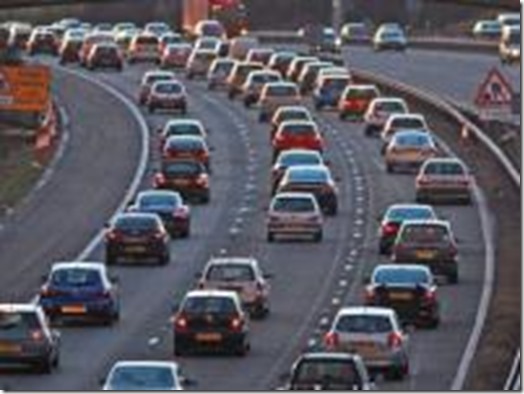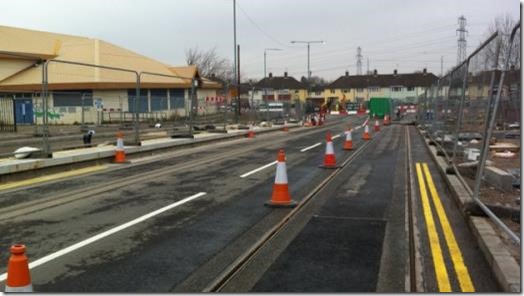The show is available on catch-up on ITV Player until around 16 August 2014.
An ITV press release a couple of weeks ago alerted me to this programme, and I commented on that release at the time. Since I wrote the piece – and before the show was aired – both of the people appearing on it have contacted me. Neither was happy with my opinion about these sorts of shows and the type of people who appear in them. It’s also generated a disproportionate (and suspicious) amount of traffic to the blog.
This genre of TV show has become very popular with the media in the last few years. Without exception, those appearing on past programmes have clearly been involved for reasons of self-interest – and I’m talking about the kind where appearing on TV is the objective, not the kind where they actually learn something and change their ways. You see, when someone is eating behind the wheel on the motorway, driving with no hands, texting, speeding, etc., you don’t need to be a rocket scientist to realise that this is both dangerous and wrong. However, these previous shows have glamourized the whole sordid business of driving badly by following the contestants – there is no other word to describe them – into bars and other places where they can show everyone how cool they think they are.
My initial assessment of the forthcoming programme – which I stress that I hadn’t seen at that time – was based on all of this. All I had was the press release for yet another hour of bad drivers who the TV company thought made for good TV.
In fact, I was wrong to suggest (or expect) that bad driving would be glamourized here, too. The show did not – in any way, shape, or form – suggest that the normal behaviour on the road of the two featured drivers was anything other than of an appallingly low standard. One of them – the one who wrote to me and stated that he was now a better driver than me – was an accident waiting to happen. He was speeding, shooting red lights 6 seconds after they went red (and claiming they were on amber), and so on.
A simulated (but realistic) collision with someone driving like he did under normal circumstances scared the shit out of him. The programme suggested that this had changed him, and one can only hope that it did. But I have to say that anyone who was driving as badly as this guy was prior to that experience is likely to need a little more than a scare to put things right. As I have said, it isn’t rocket science knowing the difference between right and wrong, and when someone actually denies or defends it then you have to wonder why they are even on the road to start with. And as for driving better than me… well, let’s just say that I’ve never had to make such a huge leap from such a low starting point, so I don’t think so. Let’s just hope he drives a little better than he did before.
The other driver got less screen time, but she was actually more dangerous in her original state. She was eating, texting (almost continuously if the edit is in any way representative), playing with her dog (and letting it “drive”), applying make-up, doing her hair… all the stereotypical things you constantly read about in the press when there’s nothing more important to cover. Although she might resent this comment, she had the attention span of a goldfish, and that’s where the problem was. She, too, was subjected to a simulated incident, and got a serious wake-up call as a result.
Whether the experience changes the behaviour of these two people in the long term remains to be seen. The programme didn’t attempt to suggest that this had happened, and nor could it have. I still maintain that most of what has apparently been “learnt” from the experience by the two drivers would have been available to all but the dullest examples of homo sapiens if they’d have applied some common sense in the first place, or unless they had other underlying issues – like poor attention spans. Unfortunately life doesn’t seem to work this way, and even if they do learn from it, how on earth would you roll it out to the general public?
Each crash involved the writing-off of at least one, and up to several vehicles. These crashes required vehicles kitted out with advanced remote control systems to be totalled. If you did this for the general driving public it would cost maybe £10,000-£20,000 per experiment, and with around a million test passes each year (or approaching that figure), that would add up to between £1 billion and £2 billion! It isn’t likely to be rolled out anytime soon.
The programme was actually well made and somewhat different to its predecessors. But I was right when I said that the characters involved would feature hooks and deviate somewhat from what would be classed as “normal” (in the most general sense). When these shows start featuring boring, ugly people with no trips to clubs or coverage of expensive hobbies and pastimes included, they will begin to chip away at the problem. Until then, they remain unrealistic.
As an aside to all this, the female participant in the show has been plaguing me with emails. She doesn’t come over as very bright, in my opinion, although with hindsight that might also have been apparent in the programme. After all, she did allow her dog to “drive”, amongst other things, and you don’t need to be too smart to realise how dumb that is.
Suspiciously, I received another message on the same subject and using the same pathetic tone from an IP address only 5km away from Miss Britain’s Worst Driver within the time bracket of her first two. She denied this was from anyone she knew, then admitted in passing a few days later that it was one of her friends. Basically, it was exactly as I’d suggested to start with as a result of the suspicious IP addresses – but which she had denied.
I tried to explain to her that her IP address had been routed through Hounslow, and the other one from Staines – about 5km away. I seem to have spent the last two days trying to explain to her that no one has actually said she LIVES in Hounslow, just that the email was routed through there. She cannot get her head around the fact that her email DID go through Hounslow. And the other one through Staines, which made me suspicious. I mean, to get two messages on the same subject, within minutes of each other, with the same snivelling tone, and only 5km apart as far as the logged IP address goes… you’ve got to wonder, haven’t you? She even claimed she had talked to her ISP and they’d told her “only one digit [of the IP address logged] was correct”, which is utter bollocks, since it was a BT address and that means at least three characters would have matched even if it was otherwise wrong.
You know, of all the hundreds, even thousands, of people I have taught, I have never come across anyone like this. Is it any wonder she ended up being picked as one of Britain’s Worst Drivers?






